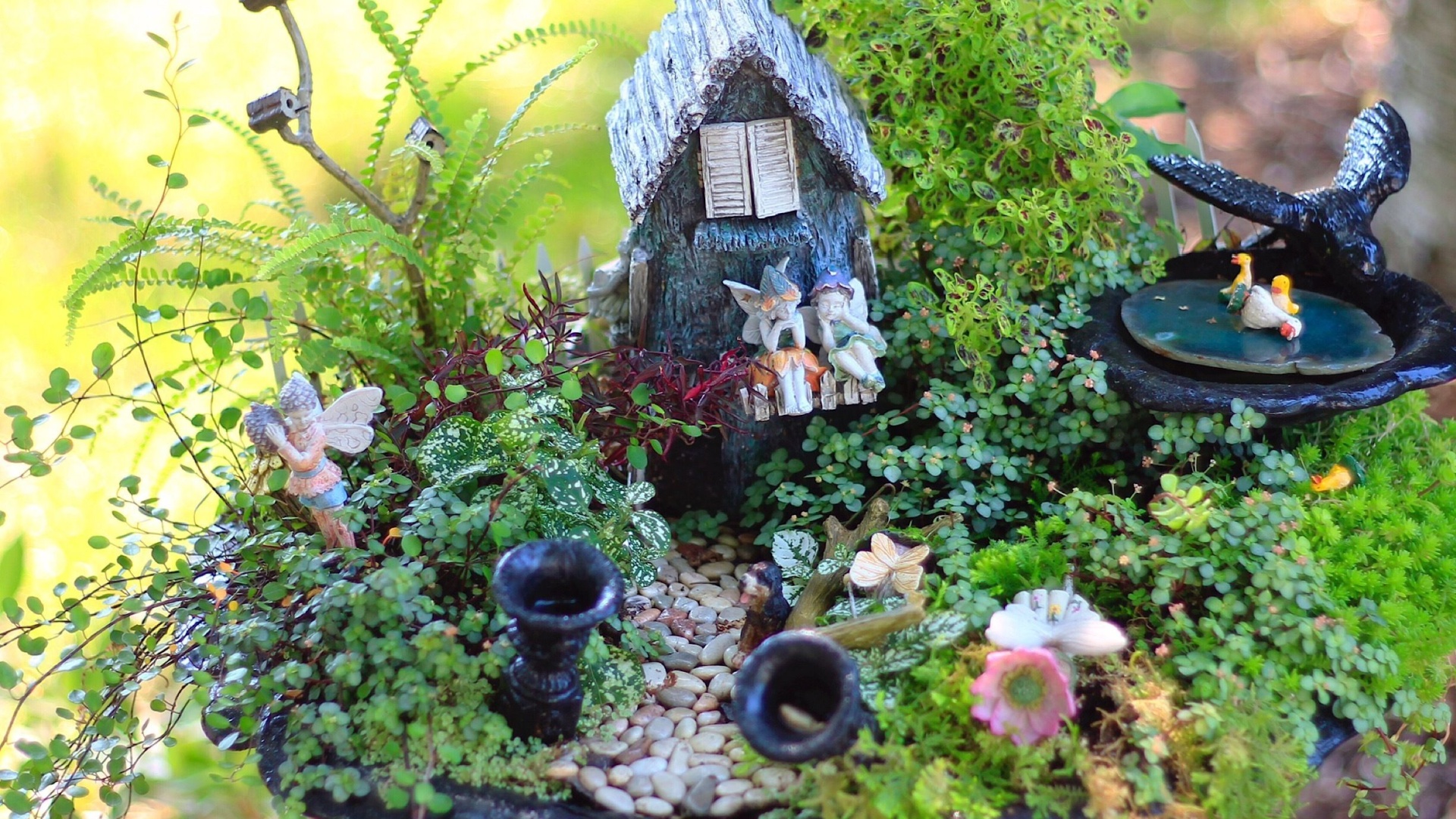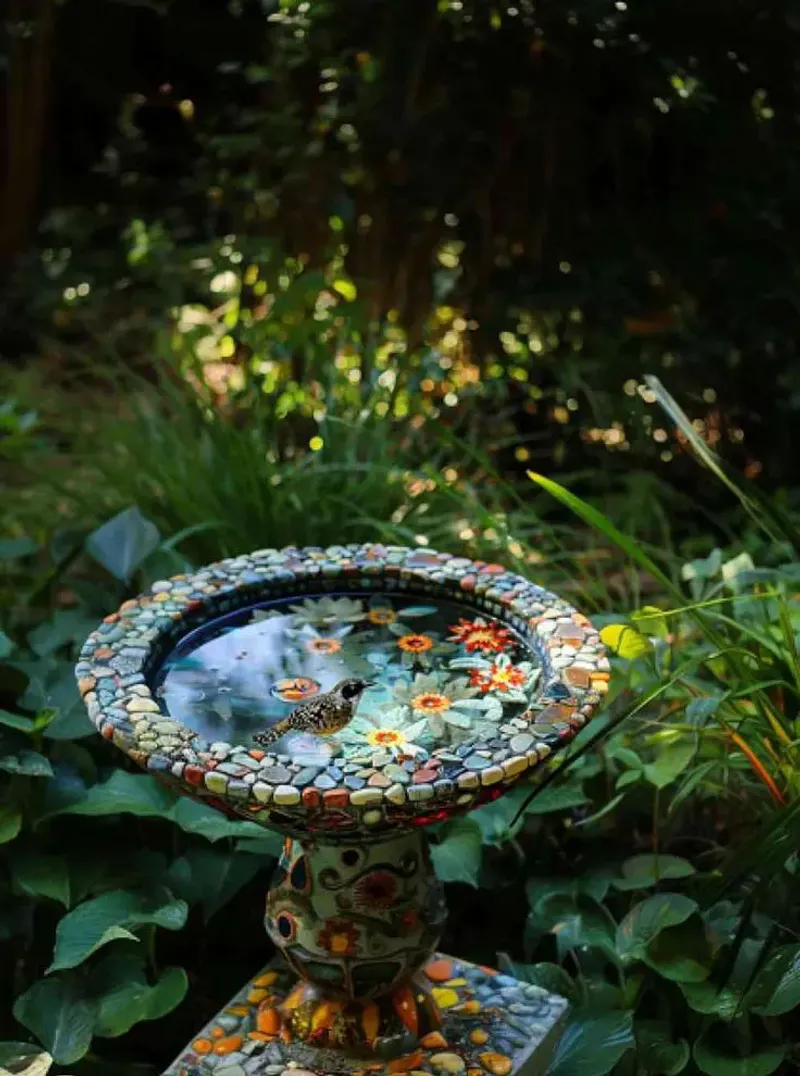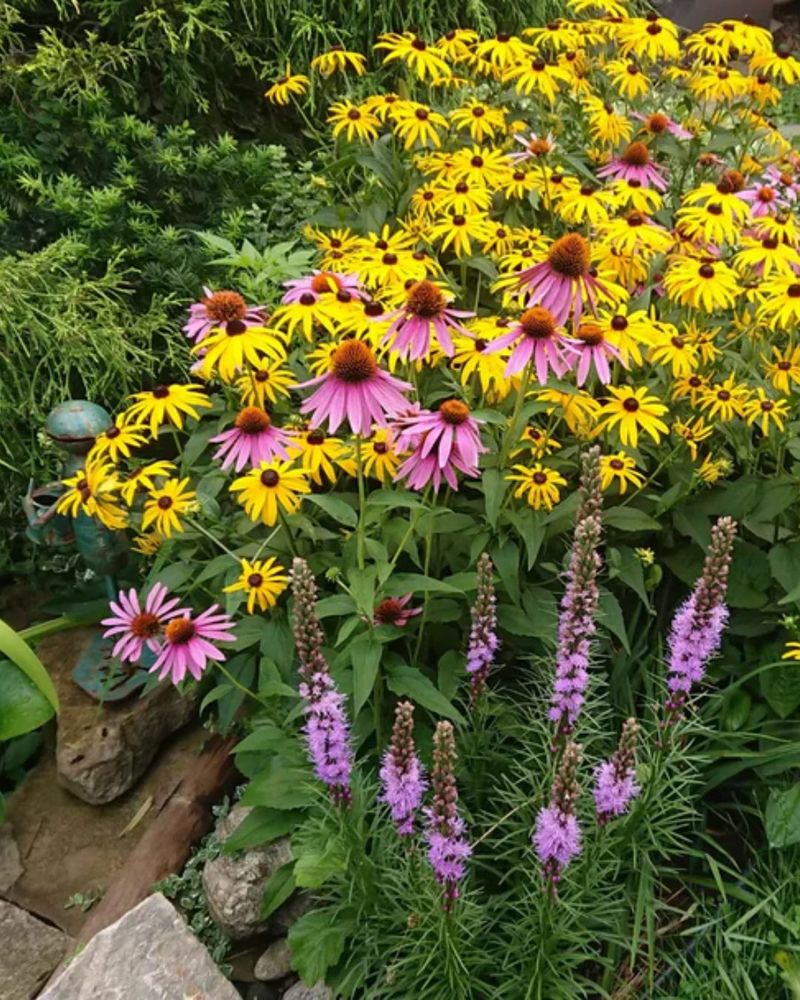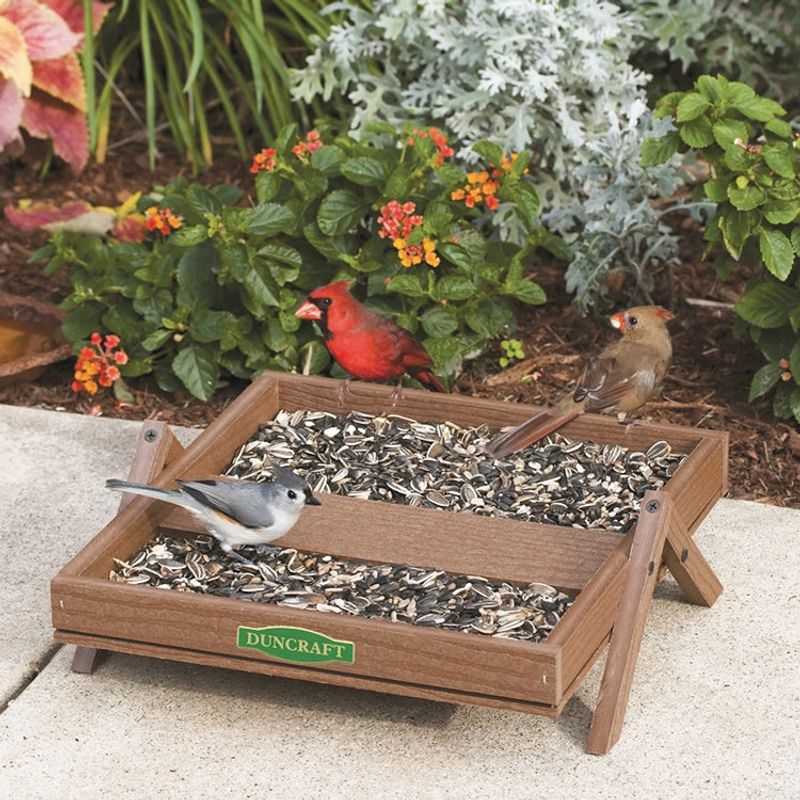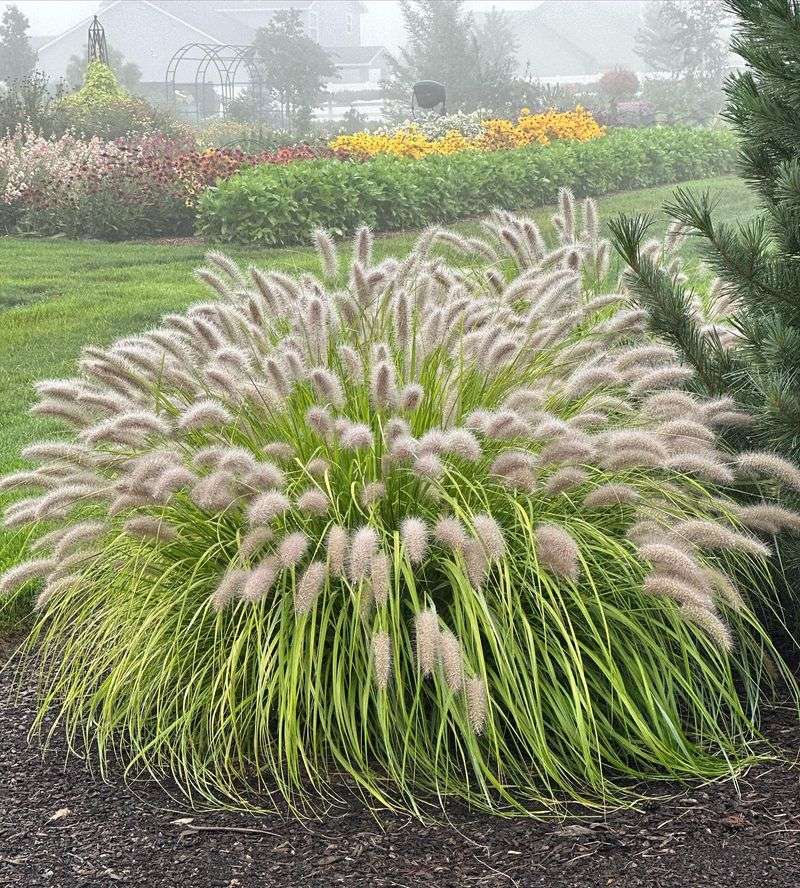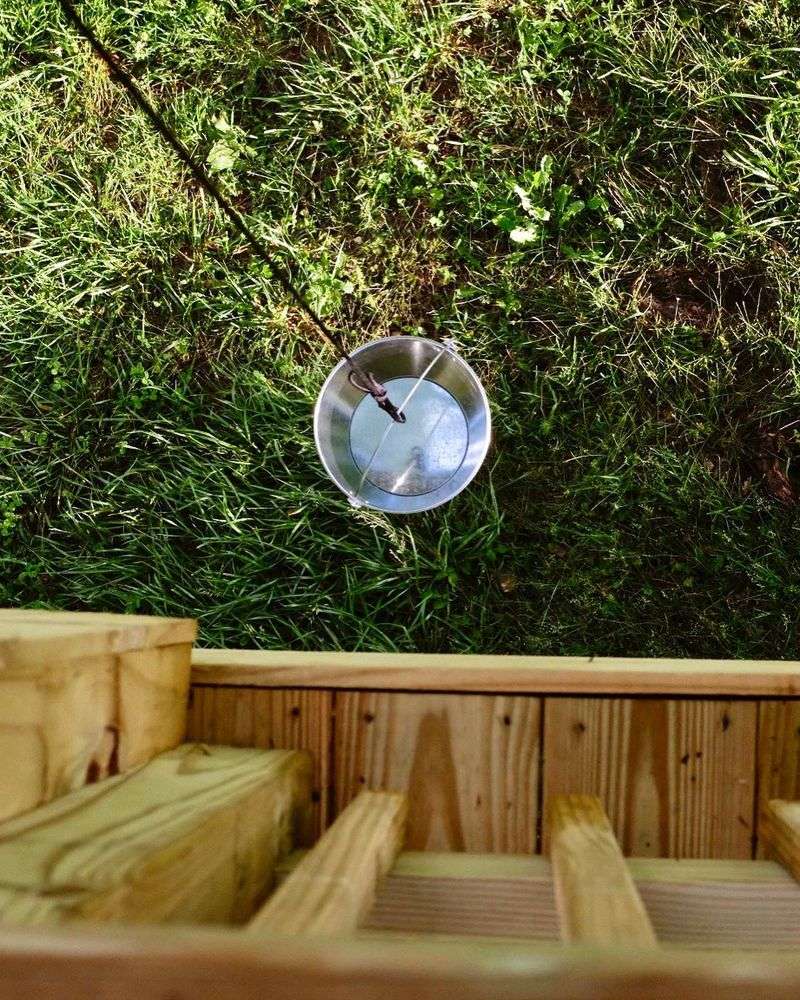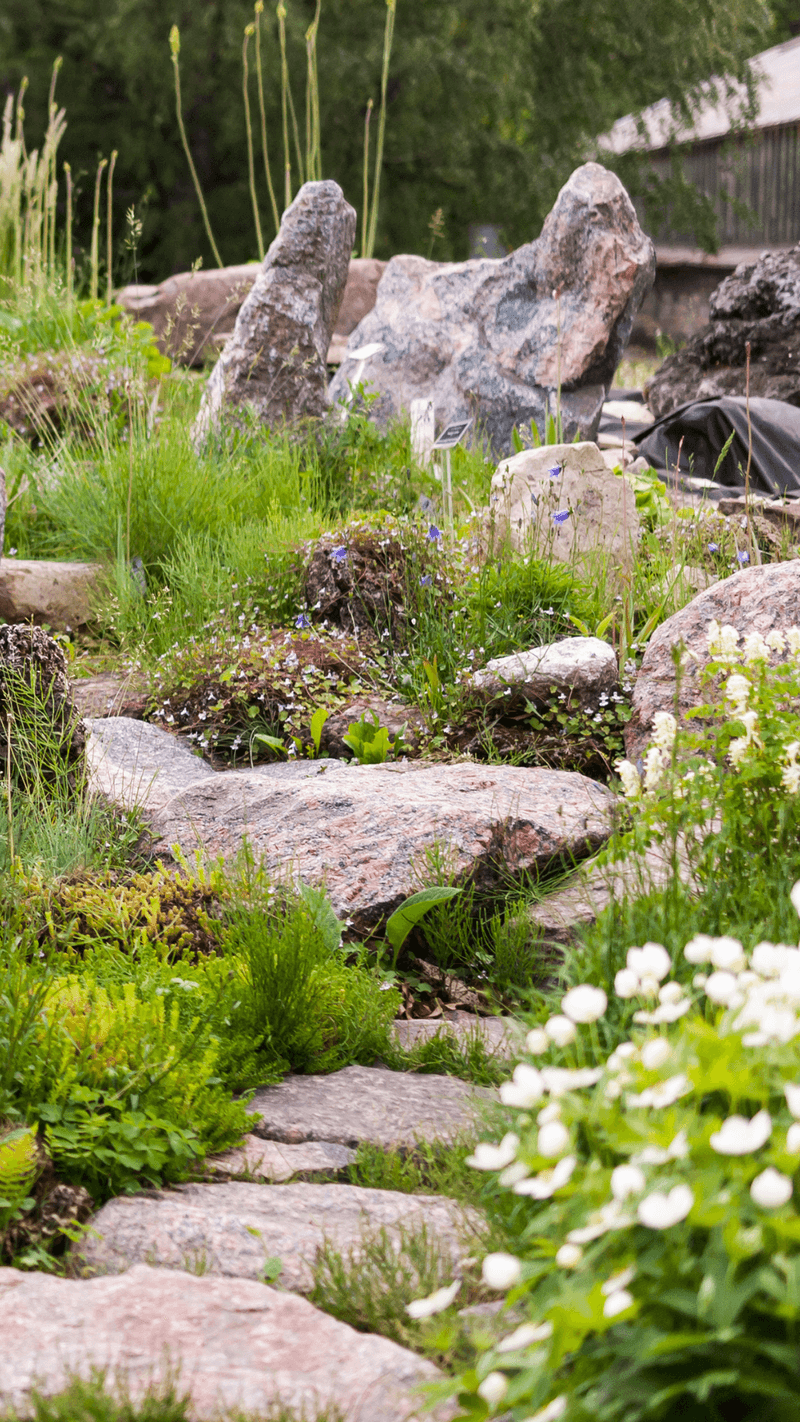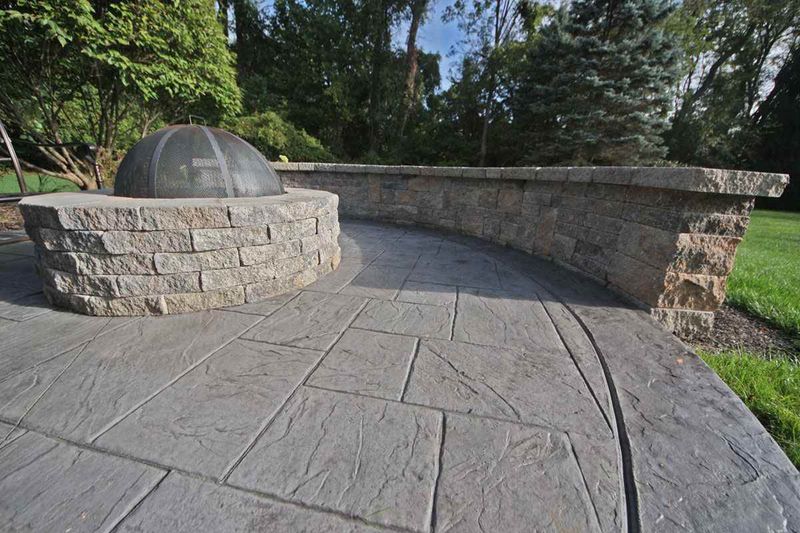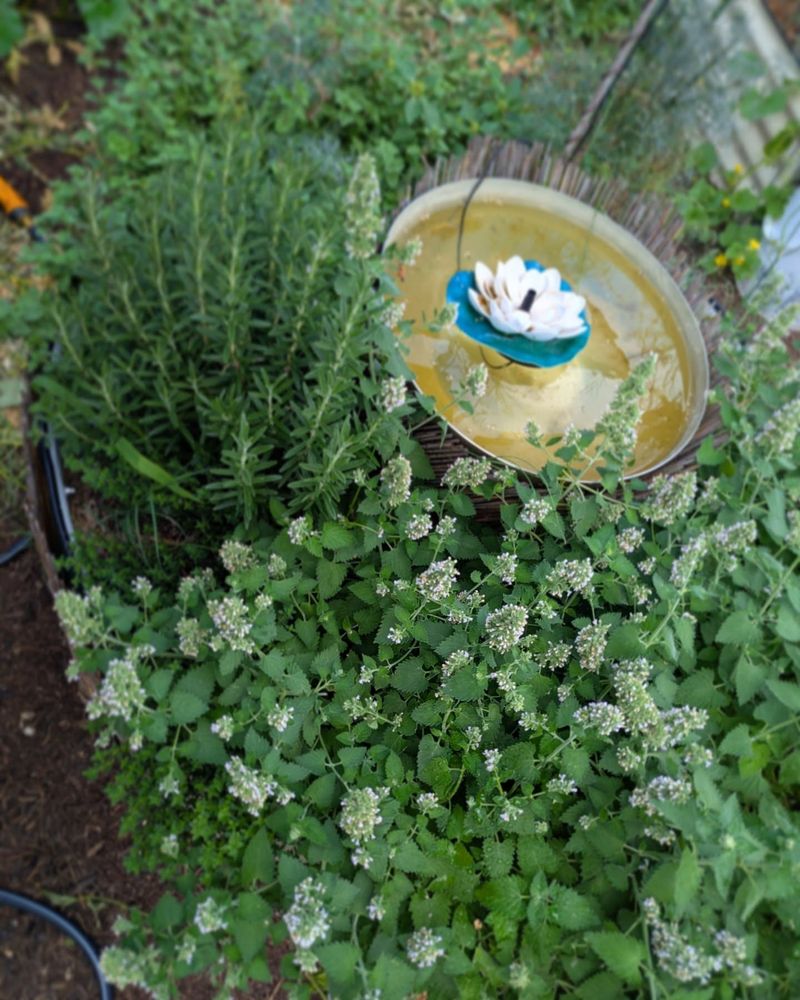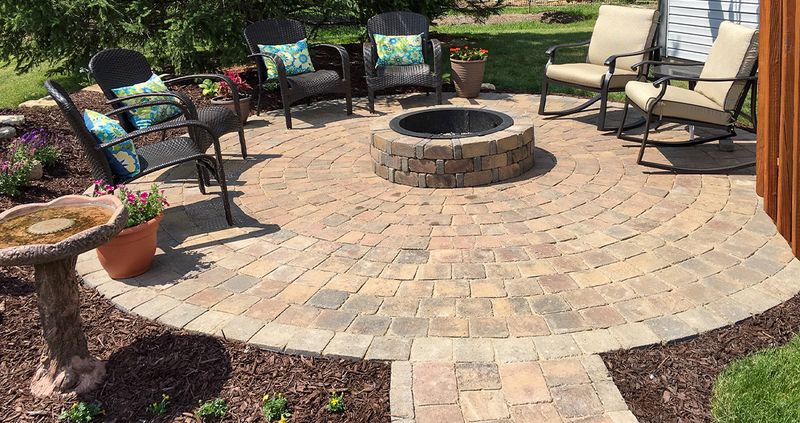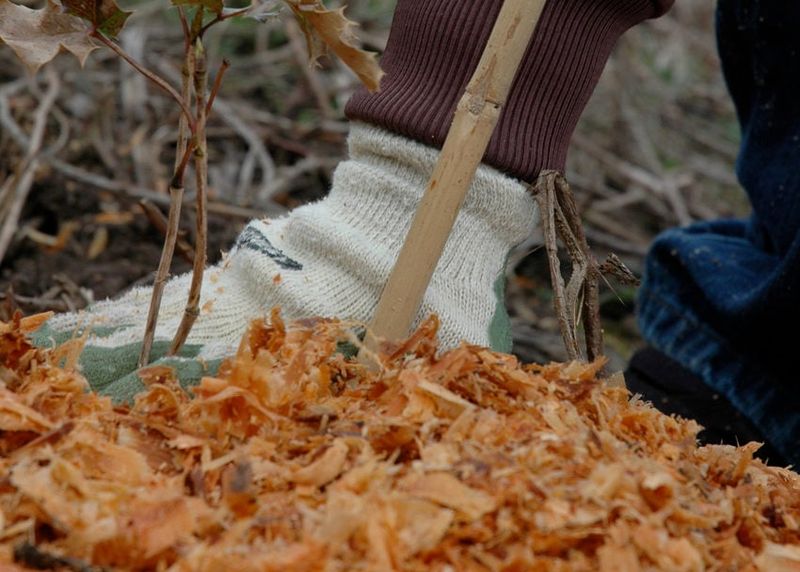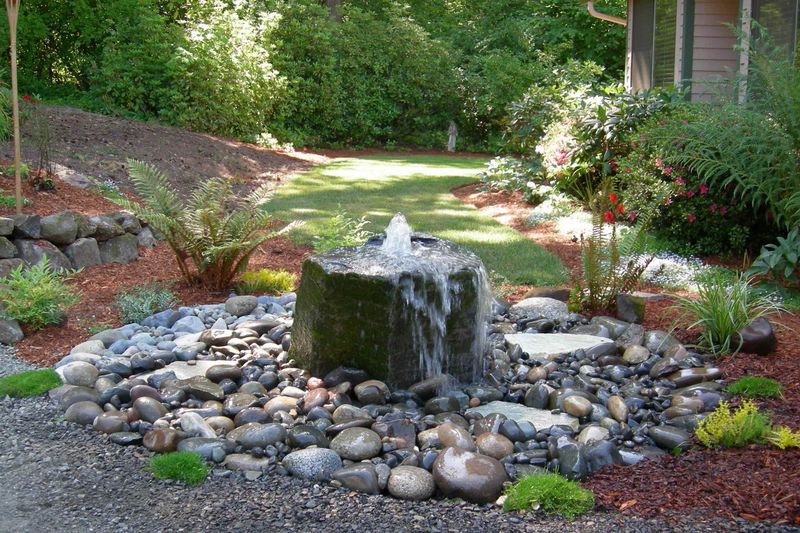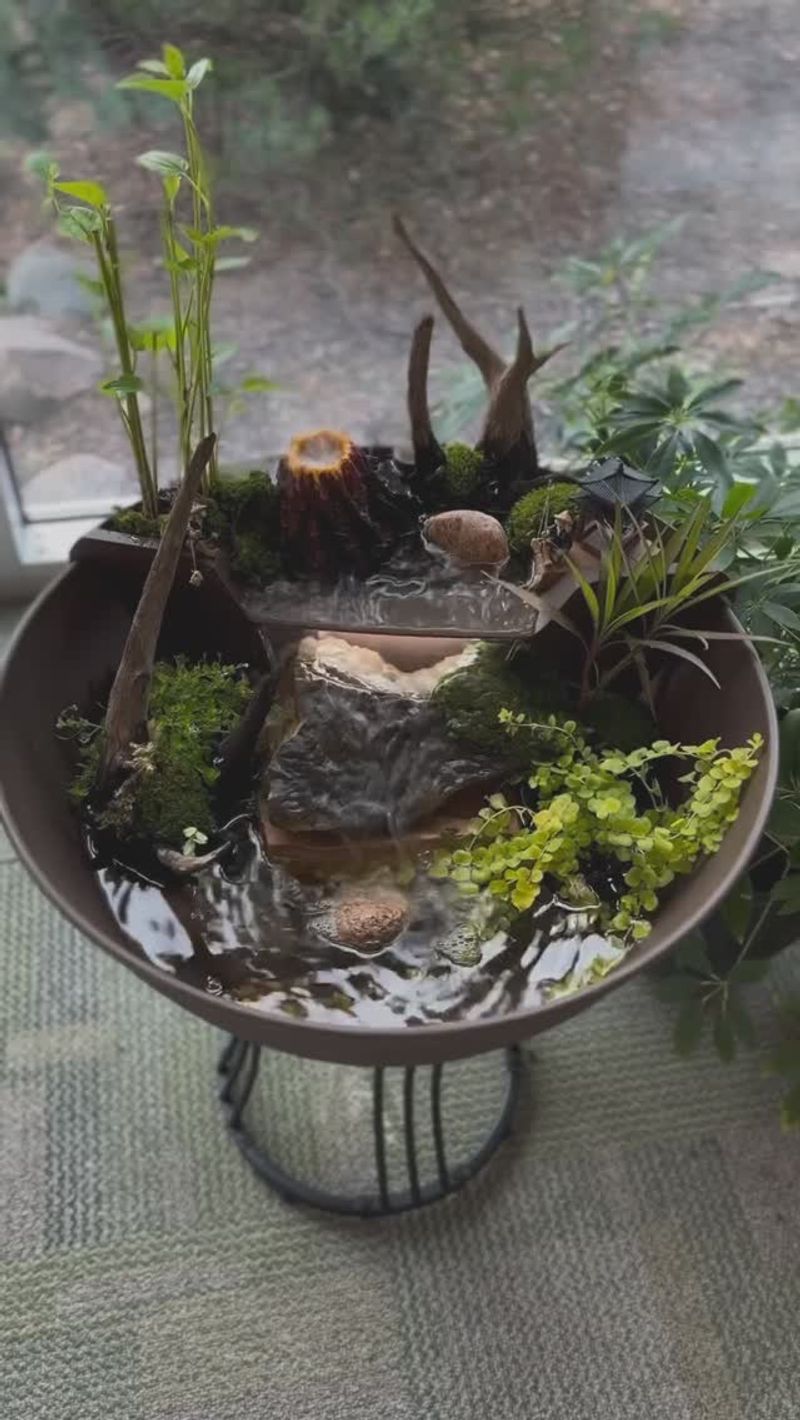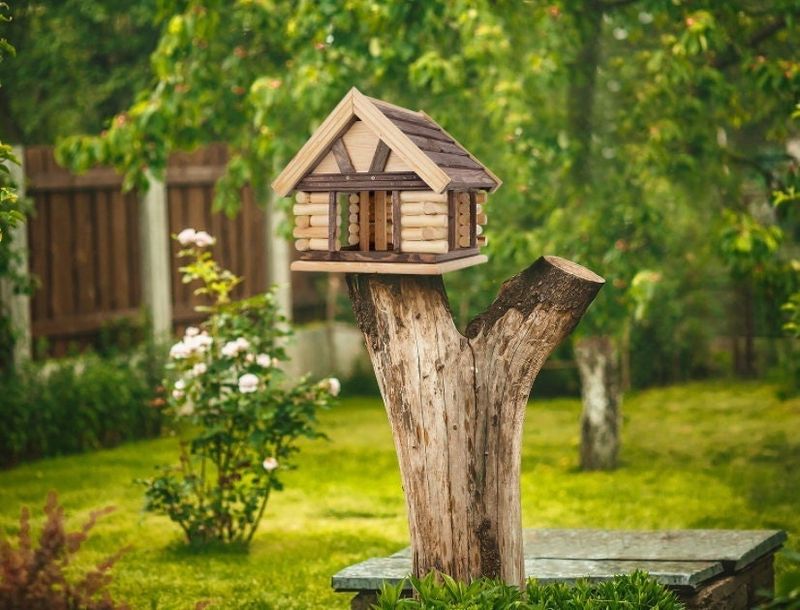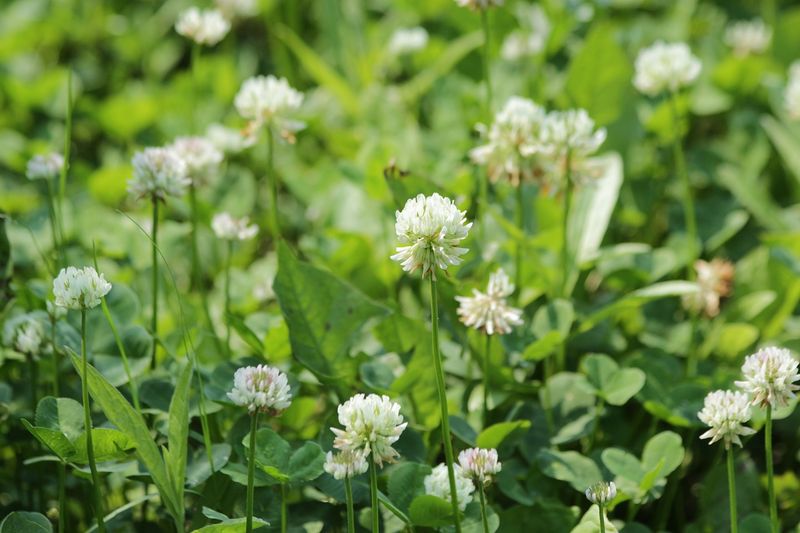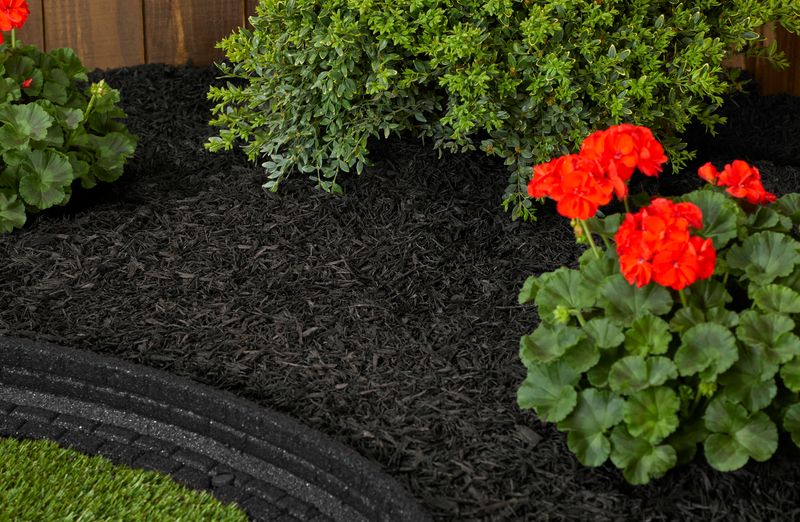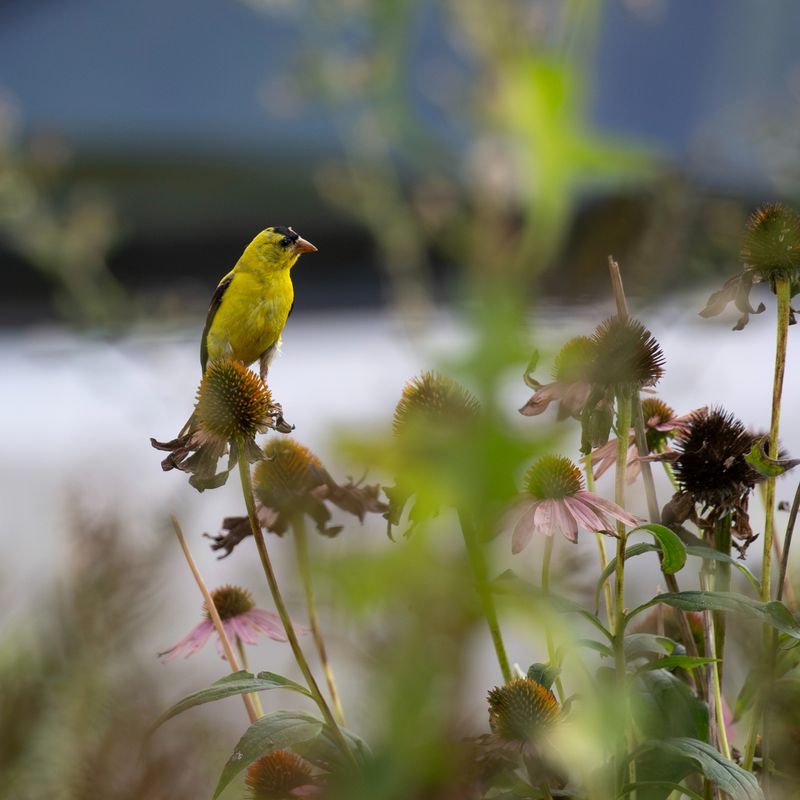Love feeding the birds but hate the mess it leaves behind? That bare, patchy spot under your feeder doesn’t have to stay ugly. With a little creativity, you can turn that eyesore into a charming garden feature.
These 16 genius bird feeder landscaping ideas will help you hide the mess and beautify your backyard at the same time!
1. Create a Pebble Mosaic
Smooth river rocks arranged in circular patterns make an artistic base for your feeder. The pebbles prevent seed from reaching soil and creating mud, while also adding visual interest to your yard.
Choose stones in complementary colors that match your garden theme. The hard surface makes cleanup easier too – just rake or blow away hulls occasionally.
For extra charm, arrange the stones in spiral patterns or simple designs that look beautiful from your window view.
2. Plant a Wildflower Patch
Native wildflowers thrive in disturbed soil and create a beautiful, natural area around your feeder. The flowers attract butterflies and bees, making your feeding station a complete wildlife habitat.
Choose shorter varieties that won’t block the birds’ flight paths. Black-eyed Susans, coneflowers, and coreopsis work wonderfully and don’t mind the occasional seed hull.
As a bonus, many birds will eat the flower seeds when they mature!
3. Install a Decorative Platform
Wooden platforms raised just inches off the ground create an attractive base while catching falling seeds. Paint or stain the wood to match your home’s exterior or garden décor.
Add a rim around the edge to keep seeds contained, making cleanup a breeze. Some birds like cardinals and juncos actually prefer feeding from the ground, so they’ll appreciate this setup.
For longevity, use cedar, redwood, or pressure-treated lumber that can withstand outdoor conditions.
4. Surround with Ornamental Grasses
Graceful ornamental grasses create movement and texture while hiding bare patches. Their root systems are tough enough to withstand seed debris, and many varieties remain attractive year-round.
Try purple fountain grass, feather reed grass, or blue fescue for different heights and colors. The swaying motion also adds a peaceful element to your bird-watching experience.
Many grasses develop beautiful seed heads that birds will nibble on – an extra food source!
5. Build a Mini Deck
A small wooden deck beneath your feeder creates an attractive focal point while protecting your lawn. Unlike large platforms, a mini deck includes proper supports and can be quite decorative.
Add simple railings or decorative post caps for extra charm. The space underneath stays dry, preventing mud and allowing for easy shell collection.
For added convenience, include a hinged section that lifts up for quick access to clean accumulated seed hulls.
6. Create a Rock Garden
Arrange various sizes of attractive stones with drought-tolerant plants to form a beautiful rock garden. The rocks prevent seed germination while providing drainage and visual interest.
Succulents, sedums, and small alpine plants thrive in these conditions and require minimal care. Their low-growing nature won’t interfere with birds accessing the feeder.
For added interest, include a few larger boulders where birds can perch before approaching the feeder.
7. Pour a Decorative Concrete Pad
A simple concrete circle stamped with leaf patterns or paw prints creates a permanent, attractive solution. The solid surface prevents seeds from reaching soil and makes sweeping up debris quick and easy.
Add color to the concrete mix or apply concrete stain for a natural look that blends with your landscape. For extra interest, embed colorful glass beads, shells, or stones in the wet concrete.
Consider adding a gentle slope to help rainwater drain away from the feeder area.
8. Plant Ground Cover Herbs
Low-growing herbs like creeping thyme, oregano, and mint create fragrant carpets that withstand seed debris. The aromatic leaves release pleasant scents when you walk on them or brush against them during feeder maintenance.
Many herb ground covers produce tiny flowers that attract beneficial insects. Their spreading nature helps them recover quickly from any damage caused by dropped seeds or bird activity.
As a bonus, you can harvest small amounts for cooking while enjoying your bird-watching hobby!
9. Install Brick or Paver Circle
Arrange bricks or pavers in a circular pattern to create an attractive, permanent base. The gaps between pavers allow water drainage while preventing weed growth and mud formation.
For visual interest, alternate colors or arrange them in spiral or sunburst patterns. Sand between the pavers helps keep them stable while allowing any water to drain through.
Consider raising the center slightly to create a gentle dome shape that helps seeds roll to the edges where ground-feeding birds can find them.
10. Create a Mulch Island
Natural wood mulch forms an attractive circle that suppresses weeds and absorbs fallen seeds. Cedar or cypress mulch has the added benefit of pleasant fragrance and natural resistance to insects.
Define the edges with metal, plastic, or stone edging to keep the mulch contained. Refreshing the top layer twice yearly keeps it looking neat and prevents decomposing seeds from creating soil.
For added interest, plant a few shade-tolerant perennials through the mulch around the feeder pole.
11. Build a Pea Gravel Basin
Small pea gravel creates excellent drainage while providing a clean, attractive surface. The rounded stones are gentle on bird feet but prevent seeds from reaching soil where they could germinate.
Choose natural colors that complement your landscape, or get creative with colored landscape gravels. Adding a border of larger stones or bricks creates a finished look and keeps the gravel contained.
The smooth surface makes raking or blowing away seed hulls quick and easy.
12. Hang Feeders Over Water Features
Position feeders above small ponds or decorative basins where falling debris becomes less noticeable. The water catches seeds and eventually breaks them down naturally, while providing birds with a convenient place to drink and bathe.
Add floating plants like water lilies or water lettuce to absorb nutrients from decomposing seeds. For smaller spaces, even a large decorative pot filled with water and aquatic plants works well.
Birds especially love this combination of food and water in one convenient location!
13. Create a Rustic Stump Platform
Repurpose a tree stump or large log slice as a natural platform for ground feeders. The wood provides an attractive, biodegradable surface that blends beautifully into garden settings.
Hollow out a shallow depression in the center to hold seeds for ground-feeding birds. As the wood slowly decomposes, it provides habitat for beneficial insects that birds will enjoy hunting.
For longer life, apply a natural sealer to slow decomposition while maintaining the rustic appearance.
14. Plant Seed-Eating Ground Cover
Certain ground covers actually benefit from fallen bird seed. White clover, for example, stays green while absorbing nitrogen from decomposing hulls, and birds eat many of the sprouting seeds.
These resilient plants quickly fill in bare patches and withstand foot traffic when you refill feeders. Their low growth habit prevents seeds from spreading to other garden areas.
Many seed-tolerant ground covers also produce small flowers that attract pollinators, creating additional wildlife habitat.
15. Install Recycled Rubber Mulch
Colorful rubber mulch made from recycled tires creates a springy, long-lasting surface that birds find comfortable to land on. Unlike organic mulches, it won’t decompose or need yearly replacement.
The rubber pieces allow water to drain through while preventing mud formation. Available in various colors, you can choose earthy tones that blend with your landscape or bright colors that create a fun focal point.
It’s also easy to rinse clean with a hose when seed hulls accumulate.
16. Create a Feeding Station Garden
Design a dedicated garden bed around your feeder with plants specifically chosen to withstand and benefit from bird activity. Seed-producing flowers like sunflowers, coneflowers, and black-eyed Susans provide natural food sources.
Include small shrubs like serviceberry or viburnum that offer perching spots and berries. The diverse plantings hide any bare spots while creating a complete habitat.
Position flat rocks among the plants to create natural platforms where ground-feeding birds can easily find scattered seeds.

